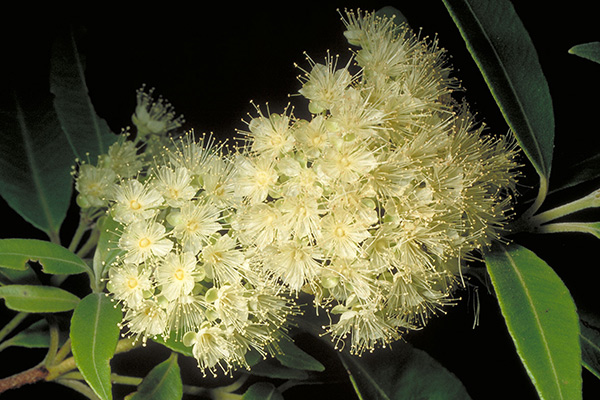General Description:
Backhousia is a small genus of 6 species occurring mainly in rainforests of eastern Queensland and north-eastern New South Wales. Backhousia citriodora is the best known and most widely cultivated species.
Lemon myrtle is a popular plant in cultivation and has been successfully grown in cooler districts provided it can be protected from frost when young. In its natural habitat it can reach 20 metres in height but is often smaller. In cultivation it rarely exceeds about 5 metres.
White flowers occur in clusters at the ends of the branches in summer through to autumn. Although the flowers are attractive, B.citriodora is grown more for the lemon fragrance of the foliage. However, the species is known to have at least two chemical forms, and their respective aromatic essential oils (which give the aroma and flavour) are richer either in citral or its close chemical relative citronellal. The citral form seems to be much commoner, and this form is the one selected and grown for its sweet lemon-type perfume and flavour. When crushed, the leaves emit a very strong aroma which would rival any member of the citrus family.
B.citriodora used to be known in forestry literature as lemon ironwood but in modern uses in foods or drinks etc. it is mostly now called lemon myrtle (lemon ironbark is a different species, Eucalyptus staigeriana, which also contains citral, but not as strongly as in lemon myrtle).
Lemon myrtle is a hardy plant which tolerates all but the poorest drained soils. It can be slow growing but responds well to slow release fertilisers. Like many other rainforest species, it has also been successfully cultivated indoors.
B.citriodora is best propagated from cuttings, which may be slow to strike. Seed is difficult to germinate.

Backhousia citriodora
Photo: Brian Walters
 Australian Native Plants Society (Australia)
Australian Native Plants Society (Australia)













